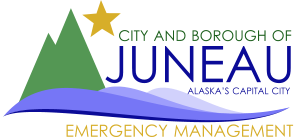Avalanche Advisory Archive Pre-2016
| Date Issued: | 2012-02-25 |
|---|---|
| Danger: | 2 |
| Trend: | 3 |
| Probability: | 2 |
| Size: | 2 |
| Problem: | 0 |
| Discussion: | TODAY...SUNNY. HIGHS AROUND 34. NORTHEAST WIND 10 TO 15 MPH. TONIGHT...MOSTLY CLEAR. LOWS 16 TO 24. NORTHEAST WIND 10 MPH. SUNDAY...CLOUDY. CHANCE OF SNOW IN THE AFTERNOON. HIGHS AROUND We have seen a slight cooling trend over the last 36hrs and no real new snow. These things help our overall stability. The high winds aloft yesterday were moving a lot of snow around. Winds from the North and North West are great for cross loading our urban start zones particularly Cross-Bay and Snowslide Creek along Thane Road. Much of the snow picked up along the ridge tops by the wind was lifted up into the atmosphere and never returned to earth. What remains is a patchwork of scoured mountain and ridgetops with wind-loaded areas below the tops and near tree line level. These wind loaded areas can have slabs 10 - 20 times as thick as the snow that was originally available for transport. The winds forecast for today are light to moderate. Based off the pressure gradients that created yesterdays higher winds aloft I am anticipating the same again today, only decreasing through the afternoon. With a nice sunny day; point releases where snow warms and drops off of rocks or trees then runs downhill without cracking out a slab are to be expected. Avalanche danger is MODERATE today: Natural avalanches possible, but unlikely, potentially destructive avalanches unlikely to come near or reach developed areas. Human triggered avalanches possible. The highest hazard zones are the new windloaded slabs found just beneath wind scoured elevations (which are likely to be very locally variable), and cross loaded mid slopes on E - S - W aspects. Smaller triggers may not cause these slabs to release while larger triggers such as multiple people on slope or a snow machine will greatly increase the likelyhood. Even though natural releases are not probable they are still possible and these will be dry slab avalanches that run very fast and push a large powder cloud. So it might not be a bad idea to continue finding alternatives to the Flume and Perserverance trails today. |
| Tip: | HOW TO RECOGNIZE WIND SLABS: Lucky for us, wind creates easy-to-read textures on the snow surface and characteristically shaped deposits. No one should go into avalanche terrain without first learning how to read these obvious signs. An old avalanche hunter's adage: If you have developed a good eye for slope steepness and the effects of wind, you can avoid about 90 percent of all avalanches. ERODED SNOW VS. DEPOSITED SNOW Eroded snow: ? Looks Like: has a sandblasted, scoured, scalloped, roughed-up look. ? Feels Like: often hard snow and difficult to negotiate on skis, snowboard or snowmobile. ? Also called: \"sastrugi\". ? What it means: Weight (snow) has been removed from snowpack and it usually means that the snow has become more stable than before. Deposited snow (wind slabs): ? Looks Like: smooth and rounded, lens shaped, pillow shaped, chalky-white color ? Feels Like: \"slabby\" i.e. harder snow on top of softer snow. ? Sound: often hollow like a drum--the more drum-like, the more dangerous ? Often notice: ? Cracks shooting away from you--the longer the crack, the more dangerous. ? Falling through a harder surface layer into softer snow below. You can easily feel this with a ski pole or a snowmobile track punching through. ? Difficult trail breaking . Keep falling through the slab. ? Hardness: can be very soft to so hard that you can hardly kick a boot into it. ? Also called: pillows, wind slabs, snow transport. ? What it means: weight has been added to the snowpack. If the weight has been added recently, and it's on a steep slope without anchors, then it almost always means danger. ? What you should do when you find a wind slab on a steep slope: ? Stop immediately! Don't go any farther! ? Back off if you're on a big slope and dig down to investigate how well the slab is bonded to the underlying snow ? Jump on a few safe, test slopes to see how the snow responds. ? If the slab breaks away easily on your tests, don't cross larger slopes. Go back the way you came or find another route that avoids wind slabs. ? If you absolutely have to cross the slope (and I can think of damned few reasons why you HAVE to cross a dangerous slope without delving into B-movie plot devices), stay on the extreme upper edge of the wind slab, wear a belay rope tied to a solid anchor, and hope the crown fracture breaks at your feet instead of above you. |
| Forecaster: | Chris Eckel |
